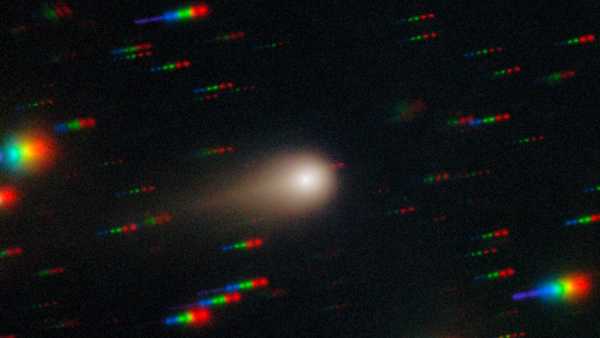
(Image credit: NASA/JPL-Caltech)
Astronomers have identified a stunning new phenomenon in the catalog of extreme events in the Universe – a class of cosmic explosions so powerful that they rank among the most energetic events since the Big Bang.
These rare, ultra-bright events were observed at the centres of three distant galaxies, where supermassive black holes flared up, tearing apart massive stars that wandered too close. Unlike typical stellar explosions, which brighten and then dim over weeks after sudden bursts of energy, these cosmic beacons took months to reach their maximum brightness and remained visible for years. Scientists have now classified these events as extreme nuclear transients (ENTs).
One such event, called Gaia18cdj, released as much energy in one year as 100 suns would emit in their entire lifetimes.
You may like
- Newly 'awakened' black hole emits 100 times more energy than scientists have previously observed
- Strange repeating nova explosion is one of the brightest ever recorded
- James Webb Space Telescope Captures Sharp Growth of Black Holes in Galaxies at 'Cosmic Noon'
“It was clear from the beginning that we were seeing something very extreme in terms of energy,” Jason Hinkle, an astronomer at the University of Illinois at Urbana-Champaign who discovered the flares while analyzing data from the now-decommissioned Gaia space telescope, told Live Science.
What sets ENTs apart, Hinkle says, is not just their enormous energy, but their duration. Their constant brightness allows them to be observed over vast cosmic distances — much farther than typical stellar explosions — giving astronomers a unique opportunity to probe the distant early universe.
“We're expanding our understanding of what we think is the most energetic environment in the universe,” study co-author Anna Payne, a research scientist at the Space Telescope Science Institute in Maryland, said in a NASA statement.
The events described in the study, published June 4 in the journal Science Advances, give scientists a powerful new tool for studying the earliest and most distant black holes and their evolution in relation to their host galaxies.
New class of cataclysms
In 2020, Hinkle noticed a pair of unusually bright and long-lasting flares while studying data from the Gaia telescope, which tracks changes in the sky from distant stars and galaxies. The two flares were originally recorded in 2016 and 2018.
Then, in 2023, a third, strikingly similar event was detected by the Zwicky Transient Facility, nicknamed “Barbie” or “Scary Barbie” after its catalog identifier ZTF20abrbeie. This discovery confirmed that these outbursts were not isolated anomalies but instead represented a new class of powerful cosmic explosions, Hinkle noted.
“It all came together somehow,” he said. “It created, admittedly, a rare but very interesting class of extreme nuclear transients.”
To pinpoint these mysterious emissions, the researchers coordinated observations using a network of observatories, including NASA's now-decommissioned NEOWISE telescope, which helped map the dust surrounding each black hole and provide information about their habitat.
The study also
Sourse: www.livescience.com





